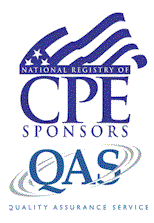Celebrating 25 years serving our friends and customers!
Strategic Management: Concepts & ToolsCode: 24-SM
Add to Cart
Course Details
Strategic Management introduces, explains, and analyzes the activities needed to develop, select, implement, and evaluate a firm's competitive strategy. This course focuses on both the content of a firm's strategy and the process by which this strategy is developed and executed. This course is designed to illustrate development, formulation, implementation, and evaluation of business strategy. Emphasis is placed on the need for awareness of, and accommodation to, changes in an organization's internal and external environments. Generic types of business strategies and techniques for analyzing strategies are also covered.
After completing this course, you will achieve the following chapter objectives::
Chapter 1
1. Define strategic management
2. Discuss the three phases of the strategic management process.
3. Outline the strategic planning process.
4. Define guiding philosophy, purpose, mission, objectives, and strategies.
5. Explain the reason for organizational policies.
6. Differentiate between long- and short-range objectives.
7. Discuss corporate, business, and functional strategies.
8. Compare and contrast social responsibility (CSR) and business ethics.
9. Explain what a strategic business unit (SBU) is.
Chapter 2
1. Explain environmental analysis.
2. Describe the relationship among environmental analysis, competitive analysis, and internal appraisal.
3. Discuss some of the characteristics of an organization's environment.
4. Explain the three major steps involved in environmental analysis.
5. Describe the six major environmental forces that can influence an organization.
6. Explain both qualitative and quantitative forecasting techniques.
7. Define scenario planning.
Chapter 3
1. Present the five forces of competition model.
2. Identify opportunities and threats.
3. Identify strengths and weaknesses.
4. Describe how to assess the competitive positions of rival companies.
5. Describe the process of industry and competitive analysis
6. Present the concept of the industry life cycle and discuss issues involved in the analysis of industry structure.
7. Summarize the major issues in determining key success factors (KSF) in an industry
8. Discuss product life cycle.
Chapter 4
1. Describe the internal appraisal process.
2. Identify nine areas that organizations should analyze in performing an internal appraisal.
3. Discuss resources and capabilities (or competencies) as the fundamental building blocks of a firm's strategy.
4. Outline the VRINE framework for competitive advantage.
5. Distinguish between long- and short range organizational objectives.
6. List several potential areas for establishing long range objectives.
7. Describe the basic steps in a SWOT analysis.
8. Outline value chain, cost driver, and core competencies analyses.
Chapter 5
1. Distinguish among corporate, business, and functional strategies.
2. Explain the characteristics of a stable growth strategy.
3. Describe three general approaches to pursuing a concentration strategy
4. Define vertical integration.
5. Discuss the difference between concentric and conglomerate diversification.
6. Distinguish among mergers and acquisitions (M&As) and joint ventures.
7. Explain a takeover and tender offer.
8. Describe a harvesting strategy
9. Discuss the defensive strategies of turnaround, divestment, liquidation, filing for bankruptcy, and becoming a captive.
10. Distinguish among generic competitive strategies: overall cost leadership, differentiation, and focus strategies.
Chapter 6
1. Describe the BCG's growth-share matrix.
2. Define cash cows, dogs, question marks, and stars as they are used in the growth-share matrix.
3. Outline the GE's model.
4. Discuss the life cycle approach to strategy evaluation and selection.
5. Describe the profit impact of market strategy (PIMS) approach to strategy evaluation and selection.
Chapter 7
1. Design organizational structures that help implement a chosen strategy/
2. Discuss how to build the strategy implementation framework.
3. Achieve various types of synergy.
4. Distinguish among four types of operations strategy.
5. Explain the concept of Management by Objective (MBO).
6. Discuss Total Quality Management (TQM).
7. Manage change.
Chapter 8
1 Outline, step by step, the control process.
2 Describe the pros and cons of various corporate performance measures.
3 Define benchmarking.
4 Differentiate conventional planning and discovery-driven planning.
5 List financial and nonfinancial measures of performance.
6 Apply the Balanced Scorecard to your company.
Chapter 9
1. Discuss reasons for the rising internationalization of business.
2. Discuss the characteristics of global industries.
3. Define multidomestic and global industries.
4. Determine strategies in global markets.
5. Outline the role of national factors in global strategy.
6. Identify generic strategies companies may pursue in global industries.
7. Apply the CAGE framework to finding the foreign location.
Presentation Method: QAS Self-Study
Category: Business Management & Organization
CPE credit: 11 Hours
Program Level: Update
Prerequisites: None
Advance Preparation: None
Exam expiration date: Participants must submit exams for grading within one year from the date of purchase



